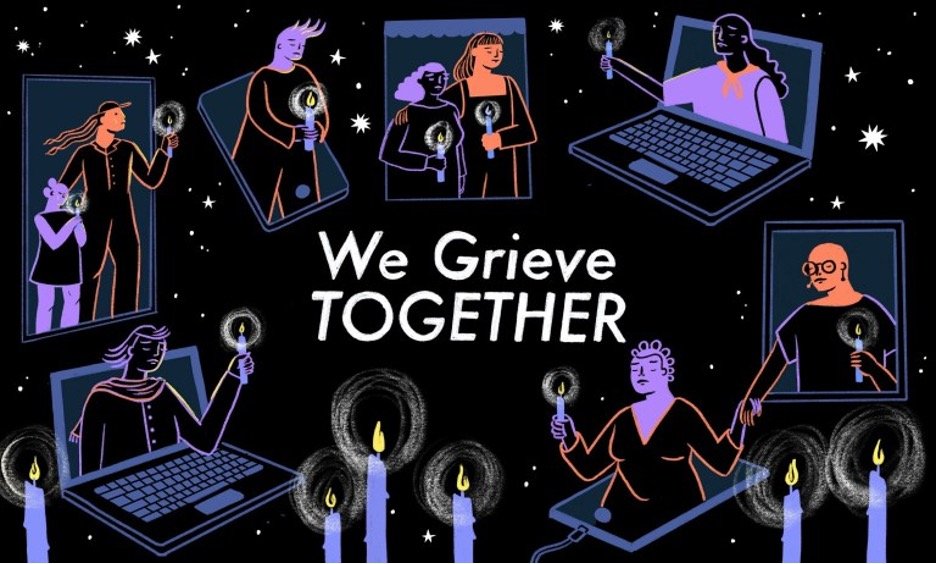WordView - In an Age of Grief, How We May Better Connect with One Another
By Jacob Dwyer
As one of the core human emotions, grief touches us all. While it has always existed, these last few years have seen grief come to the forefront of many of our lives in unexpected ways. It also means that some of us are experiencing or engaging with grief for the first time. In light of this, we delved into the word ‘grief’ to better understand our connections to it and how that shapes how we interact with one another.
What are the sources of grief?
Based on our discussion, grief can rise from many different sources. There are more regularly discussed sources of grief, such as the loss of a family member and loved one. There are also less considered sources of grief, such as a loss of dignity and a loss of self-determination. Grief can arise from a missed opportunity, where a potential future for oneself is lost. Another participant mentioned how grief can also arise from a loss of innocence, citing how grief arose in her when confronted with the true extent of racism as it would forever taint her relationship with the outside world. While it may arise because of a myriad of circumstances, at its core is loss. One participant aptly framed grief as arising from the strain caused by not knowing what to do with the love that had once existed. When you lose that place to put and to receive love - whether it be another person, something in your life, or yourself - it causes the torment that is grief.
What does grief look like?
While the sources of grief can vary, we all had a similar perception of what grief looks like. In describing their experiences with grief, many people cited examples from the five stages of grief: denial, anger, bargaining, depression and acceptance. However, in telling these stories, it was obvious that these stages are not in a neat order. Instead, we find ourselves in different stages of the process depending on our personalities and our environment and, depending on the severity of the grief experienced, never fully getting to the point of ‘acceptance.’ Even when we may feel we have reached acceptance, grief can rear its head again if we encounter something or someone that triggers those thoughts once more.
How does grief manifest outside of one’s individual experiences?
Emotions are our reactions to the circumstances, moods and relationships around us; however, the meaning we place in those circumstances, moods and relationships can differ depending on how we’re raised, who we are, and how we see the world. As such, we can experience shared emotion with individuals who we perceive as having a similar mindset to us simply by hearing or reading about their experiences. In our discussion, we discussed how grief has arisen collectively in communities affected by race-based violence. The Asian Americans community is still beset with grief after increased and incessant attacks on Asian women, most recently the murders of Michelle Go and Christina Yuna Lee. The black community has experienced collective grief since the murders of George Floyd, Breonna Taylor and Michael Brown, among others. History can also bring forth grief when stories of discrimination are told, such as the history of the Holocaust for the Jewish community or the Armenian genocide for Armenians. For those who share an identity with these victims, those circumstances quickly become personal, and the racism demonstrates once more how society aims to strip away their self-worth, opportunity and even life itself.
As with all things, our perspectives influence our reactions to these events, and some may react more acutely than others. As I write this blog, there is a war in Ukraine, which has received overwhelming media coverage in many Western countries. Amidst these news reports, whiteness once more rears its head - references to “white, blue-eyed” refugees seeking shelter from a war in “Europe, of all places” - while ongoing conflicts in predominantly non-white countries often receive disdain. This demonstrates how people have difficulty feeling the same level of grief when it doesn’t concern an identity they hold dear.
What tools exist for engaging with grief?
For those of us who empathize and do feel that grief, it can be difficult to engage, especially when it feels like our emotions are not as deep as those felt by the targeted community. In our discussion, we noted that we often worried about saying or doing the wrong thing when we do engage, leading to our inaction instead. Here, it is important to remember the humanity in grief. Since we all experience grief, there is a place from which an emotional connection can be built to how the other person may be feeling.
Understanding that we can engage, we then determined two important steps for engaging: (1) Asking for permission and (2) Seeking guidance. By first asking permission, we give the other person agency in determining whether they want us to do anything at all. Perhaps they are not ready for us and need to focus on themselves first. By asking first, we avoid overstepping while also indicating that we are here when they are ready. If they do allow us in, by seeking guidance on what they would want, we once again give the person agency and avoid saying or doing something inappropriate. Instead, we let the person in grief show us how we could be of assistance, rather than relying upon our own perceptions and assumptions. As we closed our call, these two steps served as our biggest takeaway for navigating the grief in others without further causing harm.


